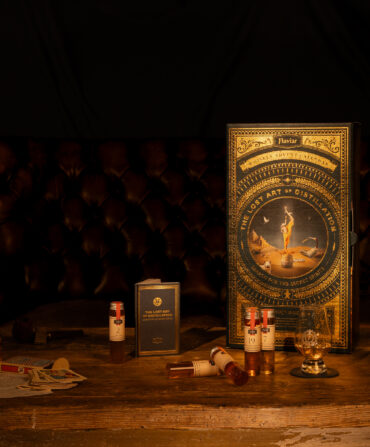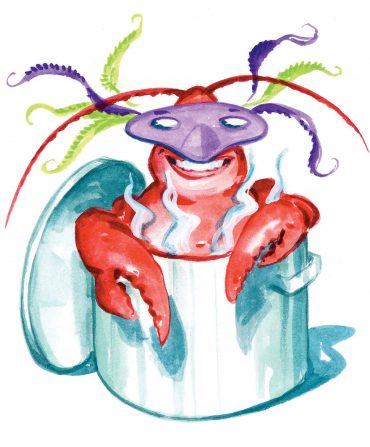-
Mississippi: Long Live the King
Tupelo, Mississippi
Tupelo hasn’t changed a whole lot in the eight decades since Elvis was born there. Locals still eat dough burgers at Johnnie’s Drive-In and buy nails at Tupelo Hardware Co., which is owned by the grandson of the man who sold the future king of rock and roll his first guitar. This summer, though, the town unveils the brand-new Elvis Presley Birthplace Trail, a multimillion-dollar pedestrian- and bike-friendly route that connects downtown to the Elvis Presley Birthplace and Museum in East Tupelo. It will also link additional sites such as the Music Bend Trail, which follows Mud Creek—home of Elvis’s favorite swimming hole—and the fairground where the singer played a triumphant homecoming show in 1956. In Tupelo, Elvis isn’t history. His legacy lives on—literally. “The family is still around,” says Blair Hill, of the Birthplace and Museum. “Our public service commissioner is his cousin.” —tupelomainstreet.com
-
Alabama
Shoals Survivor
Native Americans were the first to recognize the musical quality of the Tennessee River as it flows through the northwest corner of Alabama near Muscle Shoals. They called it the Singing River. Centuries later, Keith Richards christened the area simply “rock-and-roll heaven” after the Rolling Stones spent three days recording at Muscle Shoals Sound Studios. The unassuming structure on Jackson Highway in Sheffield also hosted Willie Nelson, Paul Simon, and the Staple Singers, among many others, from its opening in 1969 until 1978, when the studio’s legendary producers moved across town into a newer, larger space. The old building gradually fell into disrepair. Today, it’s reached the end of a three-year restoration that has returned it to its midcentury glory—right down to the analog equipment inside the famous control room. The historic space will host tours by day and operate as a studio for a small number of artists by night. “After all these years, the room still has a certain vibe,” says Bonnie Bak of the Muscle Shoals Music Foundation, the organization responsible for the restoration. The group also purchased the land behind the studio in hopes of opening a performance venue in the future—introducing a whole new generation of music lovers to that Muscle Shoals magic. —msmusicfoundation.org
-
Arkansas
Out of the Box
We’re no strangers to eccentricity in the South, which might help explain the success of the World Championship Cardboard Boat Races in Heber Springs (July 30). Each summer, thousands of spectators come to watch dozens of people paddle around a two-hundred-yard course on Greers Ferry Lake in boats made only of corrugated cardboard held together with glue, duct tape, masking tape, and other nonmetal adhesives. (There’s a metal detector at the check-in, to ferret out screws, staples, and other contraband.) In 2015, the theme was “Flip Flops and Pop Tops”—a tribute to Jimmy Buffett—and folks bobbed about in flimsy parrots, turtles, and jerry-rigged tugboats. “There were two ladies in a big round clock with the time set to five o’clock,” says Julie Murray of the Heber Springs Area Chamber of Commerce. “There was no real way to steer it, but somehow they got it across the finish line.” This year’s theme is Pixar films, and even if you wind up in the water searching for Nemo, you might still win an award: There’s also a prize for the most spectacular collapse. —heber-springs.com
-
Florida
Screen Time
Given all the discussion about race surrounding the Academy Awards earlier this year, the mission of the American Black Film Festival has never been timelier. “This is a really important pipeline for artists of color,” programming director Melanie Sharee says of the event, which aims to highlight content produced by and featuring people of African descent. “It provides them a launching pad for their careers.” Celebrating its twentieth anniversary in Miami this year (June 15–19), the festival will include screenings, discussions, workshops, and parties at historic venues throughout Miami, such as the art deco Colony Theatre and the recently renovated Lyric Theater in the city’s historic African American Overtown neighborhood. This year, the Virginia-born actor and director Nate Parker, along with actress Gabrielle Union, will discuss their highly anticipated forthcoming film, The Birth of a Nation, about former slave Nat Turner’s liberation movement. —abff.com
-
Georgia
Picture This
In the summer of 1936, a sharecropper’s wife named Allie Mae Burroughs stood before her wooden clapboard farmhouse in Hale County, Alabama, and stared into the lens of Walker Evans’s camera. The image of her pursed lips and weary eyes became emblematic of America’s struggling working class during the Great Depression. For his part, Evans became a symbol of a new shooting style called lyric documentary photography. “Evans believed you could take photography and inflect it with something personal, something particular to the person behind the camera,” says Brett Abbott, curator of photography at Atlanta’s High Museum of Art. The High’s new exhibit, Walker Evans: Depth of Field (June 11–September 11), will honor the lensman with the most comprehensive exhibition of his work ever mounted in the South. More than 120 prints from the 1920s through the 1970s, including Evans’s photos of tenant farmers and rare shots of antebellum architecture in Louisiana, dockworkers in Cuba, and subway passengers in New York, will be on display through the summer. —high.org
-
Kentucky
Unbridled Enthusiasm
Kentuckians know that when it comes to horses—like bourbon—pedigree counts. And each year, the Egyptian Event (June 7–11) at the Kentucky Horse Park in Lexington honors one of the rarest of equestrian lineages—the Straight Egyptian Arabian. “Their bloodlines trace back to the days of the pharaohs in Egypt,” says Carol Aldridge, membership coordinator for the Pyramid Society, which hosts the event. You can admire the uniquely beautiful horses—they are delicate and compact, have scooped faces, and are prized for their prowess in endurance riding and dressage—in action at performance classes, seminars, and halter competitions, where they are led rather than ridden and judged on conformation to breed standards. Or you can join the progressive barn parties on Thursday night. The Liberty Performance is a perennial favorite, and it’s probably unlike anything you’ve ever seen at a horse show. “The owner of a horse chooses a song and turns the horse loose in the arena for two minutes,” Aldridge says. The event is oddly compelling, as each horse takes its turn cantering gracefully around the ring to tunes as varied as traditional bedouin folk songs and Tom Jones’s bombastic classic “She’s a Lady.” —pyramidsociety.org
-
Louisiana
Back from the Brink
New Orleans chef John Besh isn’t the only native of the city with fond memories of the Pontchartrain Hotel. Cooper Manning—brother to Eli and Peyton—remembers family dinners during the holidays at the hotel’s Caribbean Room, where the local elite mingled over Crabmeat Remick and Mile High Pie. Built in 1927, the storied hotel once welcomed luminaries the likes of Frank Sinatra, Rita Hayworth, Truman Capote, and more than one president. Tennessee Williams wrote a good chunk of A Streetcar Named Desire while staying at the Pontchartrain. But by the early 1990s, the grande dame had slipped into a mildewed hibernation, weathering some hard times until AJ Capital Partners and investors, including Manning, began a massive renovation last year. In June, they’ll reopen the doors to this Garden District gem with 106 new tropically inspired rooms. Besh and his team will oversee the revamped hotel’s four dining establishments, including the beloved Caribbean Room and a roof-top bar with nearly 360-degree views of the Mississippi River and downtown. If Besh plans to debut any new menu favorites, though, he isn’t revealing much yet: “We’re reinterpreting some of the classic flavors, and we’re also planning to work directly from original recipes.” —thepontchartrainhotel.com
-
Maryland
Oh, Shoot
When outdoorsmen from all over the world began flocking to Maryland in the nineteenth century to hunt mallard, buffleheads, canvasbacks, teal, and pintail, among others, the state’s decoy carvers played an essential part. Artisans such as the Ward brothers (pioneers of the Crisfield school, which featured flat-bottomed oversize decoys with incredibly lifelike details) earned nationwide recognition. The age-old craft is in danger, though, according to Kerri Kneisley, executive director of the Havre de Grace Decoy Museum. “Our role right now is mostly about preservation,” she says of the museum, “and making it known that decoy carving is still something younger people can get into.” You can support the museum’s effort—and get in a little off-season shooting practice—by registering to join Kneisley at the Sporting Clay Classic, at Pintail Point in Queenstown on June 25. A fund-raiser for the museum, the all-day shoot-off takes place in a beautiful slice of Maryland horse country. There’s a Lewis Class shoot, which employs a handicapping system to give every contestant equal opportunity to win, regardless of skill level. Or you can participate in a friendly competition exclusively for vintage-double-gun aficionados. The prizes? Decoys, of course, hand carved by local artists. —decoymuseum.com
-
North Carolina
Mountain Magic
Situated on the edge of the Nantahala National Forest just outside Cashiers, Canyon Kitchen isn’t your typical white-tablecloth dining destination. The outer walls of the barnlike restaurant consist of a series of doors that, when opened, treat diners to a spectacular view of Laurel Knob and Cow Rock. And An Evening with Winemaker Guy Davis (July 13) won’t be your typical meet-and-greet with an industry professional, either. “Wine dinners can get so stuffy that you’re starting to nod off by the third course,” says Canyon Kitchen chef Adam Hayes. “Davis has a lot of energy and passion, and deep down he’s just a good ol’ boy making wine.” Really good wine. He bottles a dozen gold and double-gold vintages at Davis Family Vineyards in Healdsburg, California. Last year, he and Hayes organized a Brazilian-style cookout, roasting beef skewers over open flames. This year, they’re bringing in a live band and uncorking magnums of the winemaker’s trademark pinot noirs. Though the wine isn’t local, the food will be: Hayes anticipates okra and tomatoes coming up right on time in his beautifully maintained kitchen garden. “It’ll be a fun old-fashioned mountain party,” he says. —lonesomevalley.com/project/canyon-kitchen
-
South Carolina
Museum Makeover
When the oldest museum building in the South needed a twenty-first-century face-lift, the directors at the Gibbes Museum of Art in Charleston naturally looked to its past in order to envision its future. “We found the original 1905 blueprints in the city archives all crumpled up,” says executive director Angela Mack. “It took us a year to relax the papers so we could read them without damaging them.” Two years and $13.5 million later, the Gibbes has readied itself for a May 28 reopening. The renovated ground floor serves as a creative community center with studios and classrooms, plus a café, an event venue, and an oak-shaded garden. With 30 percent more gallery space and new state-of-the-art technology for climate control, the museum can now display more of its permanent collection and host major traveling exhibitions from national institutions. Up first, though, are two shows with local origins. Beyond Catfish Row presents visual art related to the Charleston-based opera Porgy and Bess, also a highlight of this year’s Spoleto Festival. And The Things We Carry will showcase a collection of work from contemporary artists addressing the historical implications of race in the South, including the Emanuel AME shooting last June. Mack says, “We felt very strongly that since we haven’t had a chance to do something through the visual arts about the shooting, we wanted to reopen with an exhibit that revolved around what our city has gone through.” —gibbesmuseum.org
-
Tennessee
Fun on the Farm
If the impressive lineups—names like Stevie Wonder, Paul McCartney, Widespread Panic, and Bruce Springsteen—at Bonnaroo (June 9–12), the four-day mega music festival held on a bucolic farm in middle-of-nowhere Manchester, Tennessee, have long made you wish for a ticket but visions of mud and grime and sweat kept you away, well, your year has finally arrived. As the fest celebrates its fifteenth anniversary, there’s now a more grown-up way to do Bonnaroo: Book one of the new luxury canvas tents. Outfitted with real beds, air conditioners, and power outlets, they make a comfortable base camp for the weekend. Nobody has to know that you’re the best-rested person watching Jason Isbell and Chris Stapleton play their encores, or that you cooled off before taking in big-name comedians such as Judd Apatow. And thanks to brand-new shower facilities in the VIP tent camp, you can get as down and dirty during the shows as you want. Or not. —bonnaroo.com
-
Texas
Lone-Star Stay
What do you do after you’re named Marfa Citizen of the Year? If you’re the entrepreneur Tim Crowley—whose previous projects include the Crowley Theater and Marfa Book Company—you open a hotel, so even more folks can come discover this art-filled enclave in the high desert. Built on the footprint of Marfa’s original grand hotel, which closed in 1929, the newly opened Hotel Saint George houses forty-nine guest rooms and six suites, each appointed in minimalist-chic luxury—leather furniture, steel lighting fixtures, and sheepskin rugs that stand out against the slate-gray floors. “The rooms are big and spacious with clean lines,” Crowley says. “It’s not what you usually get in rural Texas.” That’s thanks to the Saint George’s deep ties to the West Texas arts scene, which hails Marfa as its capital. Sculptures and paintings by local artists including Christopher Wool and Mark Flood are on display throughout. There’s plenty more where that came from—right outside. The hotel sits in the middle of downtown, which with all its modern art galleries and public installations feels like a version of Miami’s Art Basel, with tumbleweeds. —marfasaintgeorge.com
-
Virginia
Misty Memories
Wild horses rounded up and made to swim from their island home before being sold to the highest bidders: It may sound cruel, but as anyone who has read Marguerite Henry’s classic children’s novel, Misty of Chincoteague, recalls, the annual Pony Roundup and Swim is anything but. The event, now in its ninety-first year, is an important fund-raiser that helps keep the 150 horses that roam the Virginia end of Assateague Island healthy. And it’s a bucket-list Southern experience for anyone who ever dreamed of owning a pony as a kid—or wants to buy one now. Beginning at slack tide on July 27, the fire department’s Saltwater Cowboys lead the ponies across the channel from Assateague to Chincoteague, before an auction held the next day. The sale of as many as seventy ponies ensures a well-managed herd size, and the proceeds provide regular veterinary care for the animals, the remainder of which swim back home on July 29. If the whole pony-penning thing isn’t quite your bale of hay, though, much of Assateague is a national park, which means you can see the horses in their native habitat year-round. —chincoteaguechamber.com
-
Washington, D.C.
American Roots
In Washington, D.C., this summer, you’ll be able to find Tennessee rhododendrons blooming next to a California-desert Joshua tree growing next to a Louisiana bald cypress—on paper, that it is. Thanks to Flora of the National Parks (through January 2017), a new exhibit at the United States Botanic Garden that celebrates the hundredth anniversary of the Park Service, you won’t have to crisscross the country to see the spectacular beauty and diversity of our native plants. Species you can find down South—from the pawpaw to the pitcher plant—are amply represented in watercolor, colored pencil, photography, and other mediums. “At least half the plants exhibited are things you already associate with a region, like the magnolia,” says Devin Dotson of the Botanic Garden. “But there might also be plants that you don’t recognize.” So if you’re curious about Arizona saguaros and Oregon snow plants, you’re in luck—they’re here, too. —usage.gov/floraofthenationalparks
-
West Virginia
Prose on the Potomac
“I call it semirural,” says Ed Herendeen, founder of the critically acclaimed Contemporary American Theater Festival in Shepherdstown. “But a lot of our artists call it completely rural, and we love giving them that room to breathe.” Founded in 1762 on a curve of the Potomac, Shepherdstown (pop. 2,140) has long been an escape for the Washington, D.C., set. Each summer, there’s even more motivation to visit when the historic hamlet hosts performing artists and playwrights from all over the country for a month of cutting-edge theater. “Here, they can get away from that big-city glare and take some real chances,” says Herendeen, who spends all year tracking down such offbeat shows as this year’s 20th Century Blues and The Wedding Gift, which involve a controversial photo shoot and an intergalactic kidnapping, respectively. Between July 8 and 31, audiences will have the chance to view five new plays and then join the artists for lively discussions of the work in intimate, small-town settings. “Typically, you might go out to see a play, go to dinner, and go home,” Herendeen says. “But our audience sticks around.” —catf.org
The Southern Agenda
Southern Agenda: June/July 2016
Goings-on in the South and beyond

Illustration: Tim Bower







